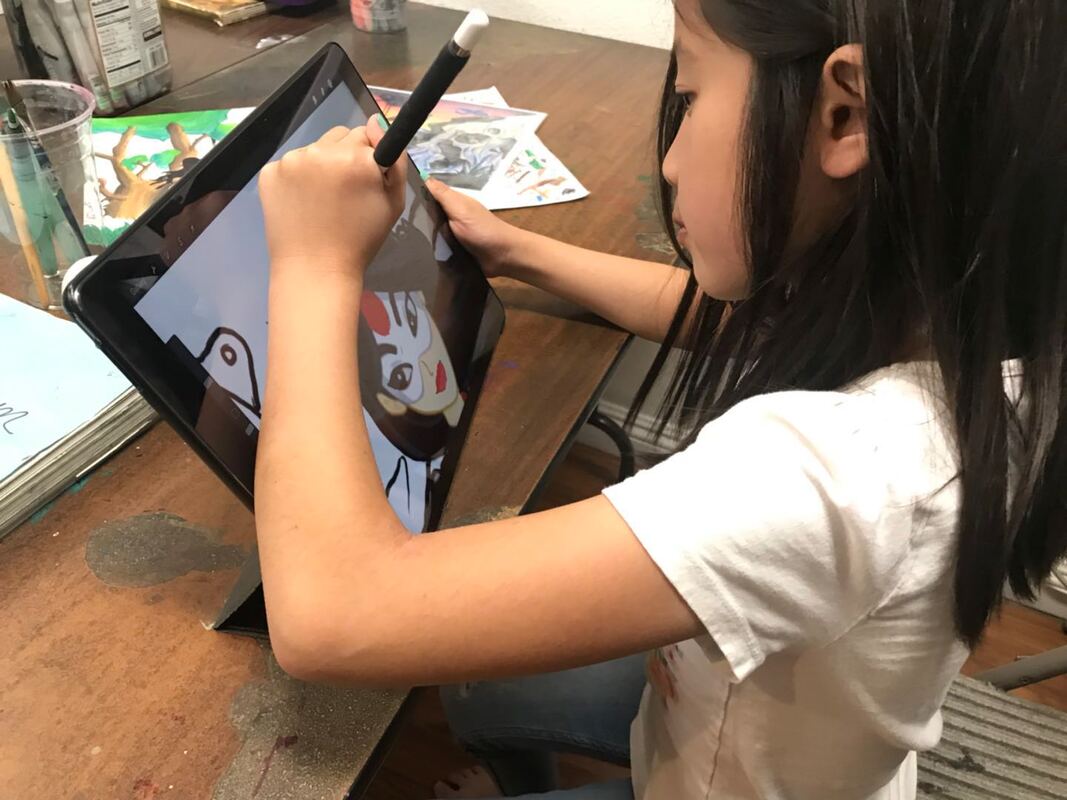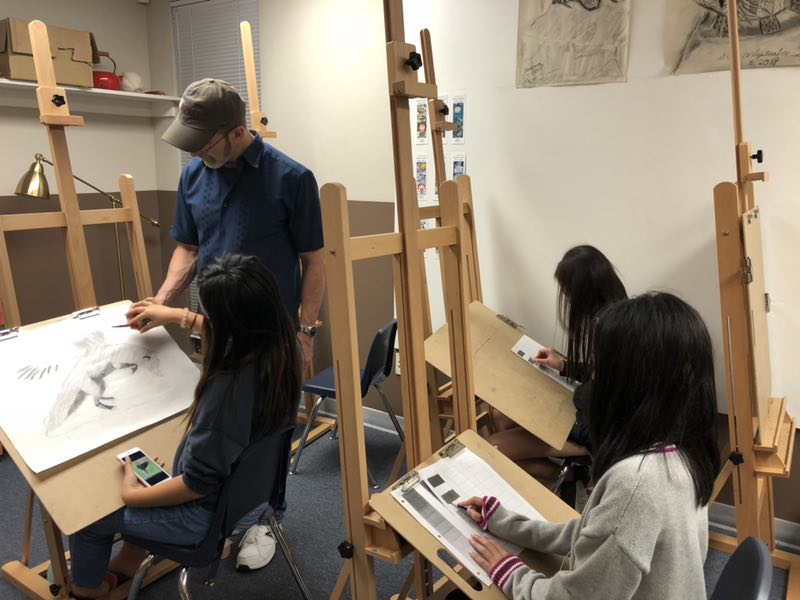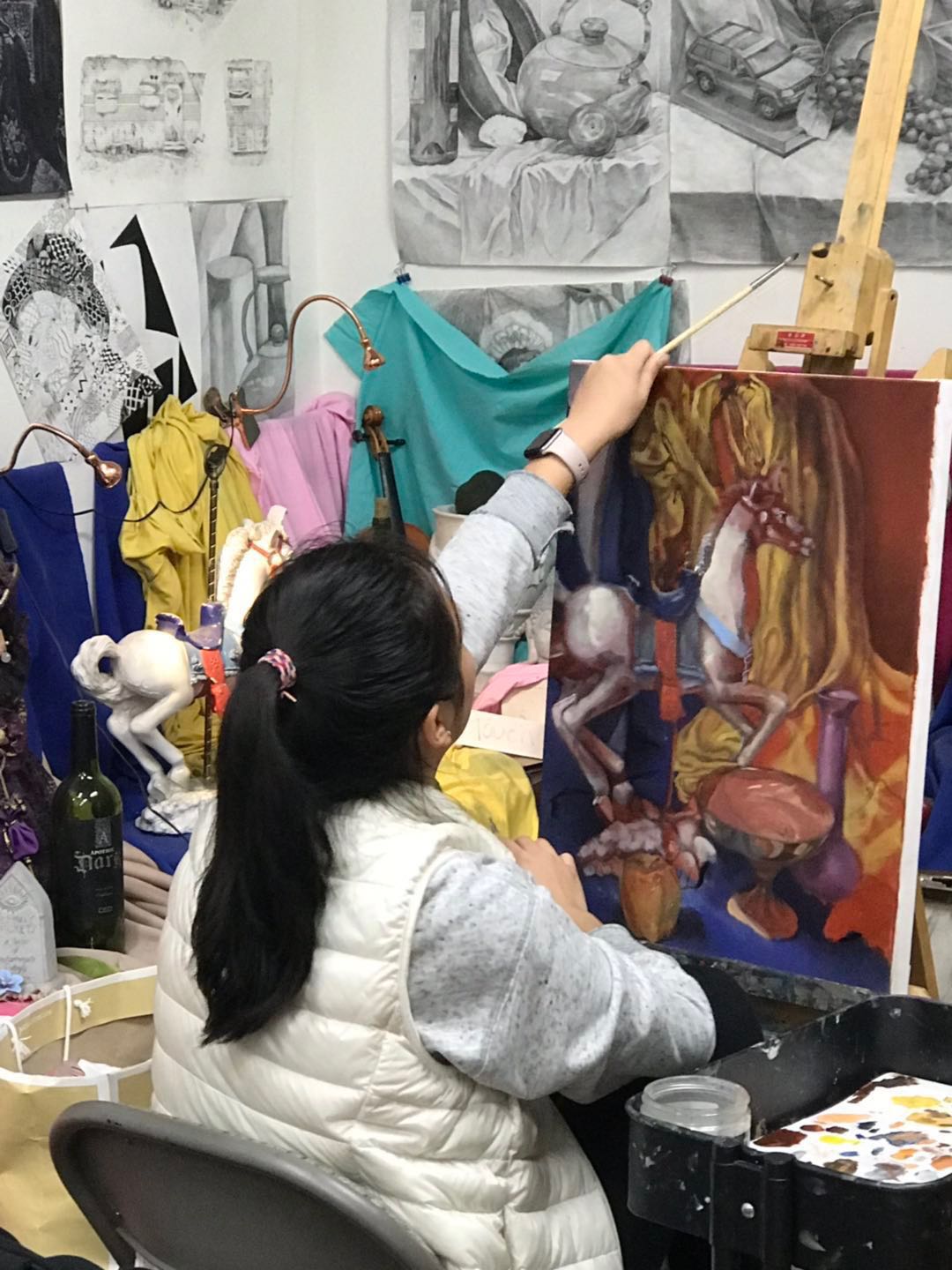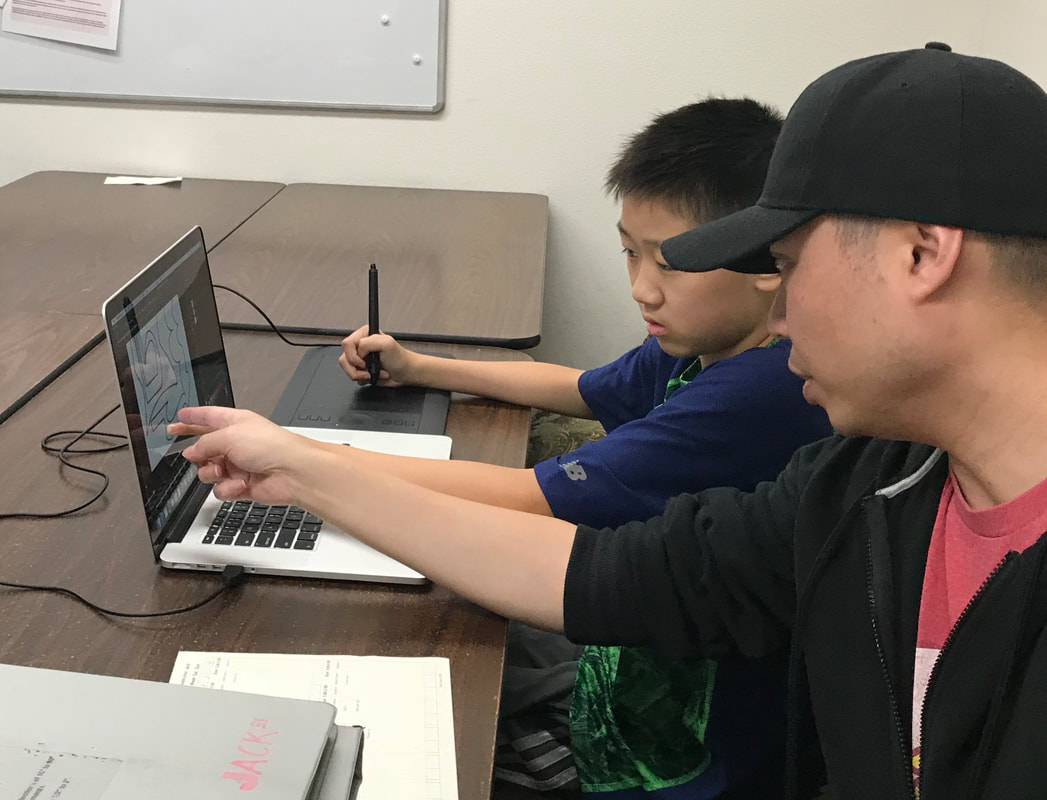|
Children’s Beginning Art Age: 3-5 Preschoolers draw their reality and what they know about the world. Rather than attempting to capture a photographic image of reality, this stage of development is dedicated in creating representations using symbols formed with circle, squares, lines, etc., as they associate common objects such as, flowers, trees, sun, cats, etc. This is an introductory stage for creating, challenges, development & expressing ideas. Student use learnt skills, language, techniques, & processes of art making (line, texture, shapes, color mixing, pattern & design recognition, etc.); but most importantly imagination! Here at WCAAD, we encourage open-ended exploration of art materials, self-confidence, & enjoyment in art & learning. Student collaborate & independently explore creating, making, & presenting for a range of audiences. Observation & anecdotal responses, assist students, in various situations where they choose more personal artwork. Eventually children will reach a benchmark where habitual repetition of associative symbols on familiar objects are used as subjects evolving into balance & consideration of a picture as whole. Children’s Creative Art Age: 6-8 Pictures become more complex & reflect the world in factual, realistic representations. The schema represents the children's active knowledge of the subjects and there is definite order in space relationships: “everything sits on the “base line”. They learn different ways to depict objects, informal drawing and painting, materials & explore techniques. Visual arts are part of their daily life here at WCAAD, & range from drawing, painting, sculpture, & print making, to landscaping, & folk arts, color theory, art appreciation, purpose, space & relation; are few of many topics discussed for better student perspective & analyses. Awareness & use of Design elements in everyday observation are evident to the insights & visual stimuli that is processed & interpreted regularly. They understand that knowledge of the visual arts is necessary to understand design-oriented surrounding space. The main characteristics of this stage is to balance the whole picture & carefully composed compositions are the objectives. Children at this stage start demonstrating stronger focus on drawing in a more realistic fashion. Transitional Art Age: 9-11 Children at this stage may become very frustrated if they are unable to create a realistic picture. This is the time when children may express “I can’t draw.” They are increasingly and critically aware of the immaturity of their drawings and therefore continuously experience frustration at "getting things right." This stage is the crisis period when children are easily discouraged. Those who do manage to survive the crisis and learn the "secret" of drawing will become absorbed in it. With our mentoring, students become much more self- aware, and at this stage, trying for more details, hoping to achieve greater realism, and attempt to produce artworks that meets adult standards. Students create art from their own interest with an Introduction to Fundamentals of Art and Technology. They will demonstrate willingness to experiment, innovate, and take risks to pursue ideas, forms, and meanings that emerge in the process of art or design. Furthermore, through language and skills, students perceive and respond to works of arts, objects in nature, events, and their environments. This is a critical stage for children because they either reach a plateau or enter the stage of realism. Junior Advanced Art Age: 12-13 After 12 years old children enter adolescence, marking the end of art as spontaneous activity. They strive to create “adult-like” naturalistic drawings with formal foundation. Light and shadow, perspective, three-dimensionality etc. Various studio experiences in the classroom will give students opportunities to experience a variety of media while developing student’s individual style and creative problem-solving skills. Students at this stage will learn the Elements of Art and Principles of Design while developing professional drawing skills, painting techniques, & digital media. Create works that use the elements of art and principles of design to solve specific visual arts problems. NEXT PHASE: After this stage most often in our program, students take a serious approach & interest in an art careers or consider alternative methods. They may want to pursue an art high school portfolio or continue into the portfolio preparation classes. Synthesizing their ideas & research devoted to validating theories in modes of learning will develop life skills, use varied approaches to problem solving & collaboration with exploration of various materials & processes. Redesign an object, system, place, or design in response to contemporary issues. High School Portfolio Preparation For certain students we realize that some youths have a clear vision of their career path. Our program caters to a variety of tracks, particularly one where students choose an Art High School in the Visual or Performing Arts. Art High School Portfolio Preparation is a class designed for some student who decide on entering art high school. Students will be given the opportunity to review college application requirements, receive guidance on how to choose the right art high school, prepare admission portfolio requirements and learn about the variety of career options in the visual arts. This intensive goal-oriented curriculum, deepens their artistic development through exploration and strengths skills and range. College Portfolio Preparation Age: 14-18+
Our Portfolio Preparation Class will help you with fundamental knowledge of art and design processes, and, help you properly arrange your artworks to demonstrate its relevance to the major to which you are applying to. Students will work one-to-one with faculty to develop an intense, individual, focused and disciplined-specific portfolios. Courses include: Animation, Product Design, Transportation Design, Entertainment Design, Illustration, Graphic Design/Advertising, Fashion Design, Fine Art, Architecture/Urban/Environmental/Interior Design, Figure Drawing, UI/UX Design.
0 Comments
Leave a Reply. |
Archives
July 2024
|
Campus420 S Pine St, San Gabriel, CA 91776
|
Office HoursMon-Fri: 11:00 AM - 7:00 PM
Sat-Sun: 8:30 AM - 7:00 PM Summer Schedule Mon-Sun: 8:00 AM-7:00 PM |
Copyright © 2024 MyArtEducation.com
West California Academy of Art and Design. All Rights Reserved.
West California Academy of Art and Design. All Rights Reserved.












